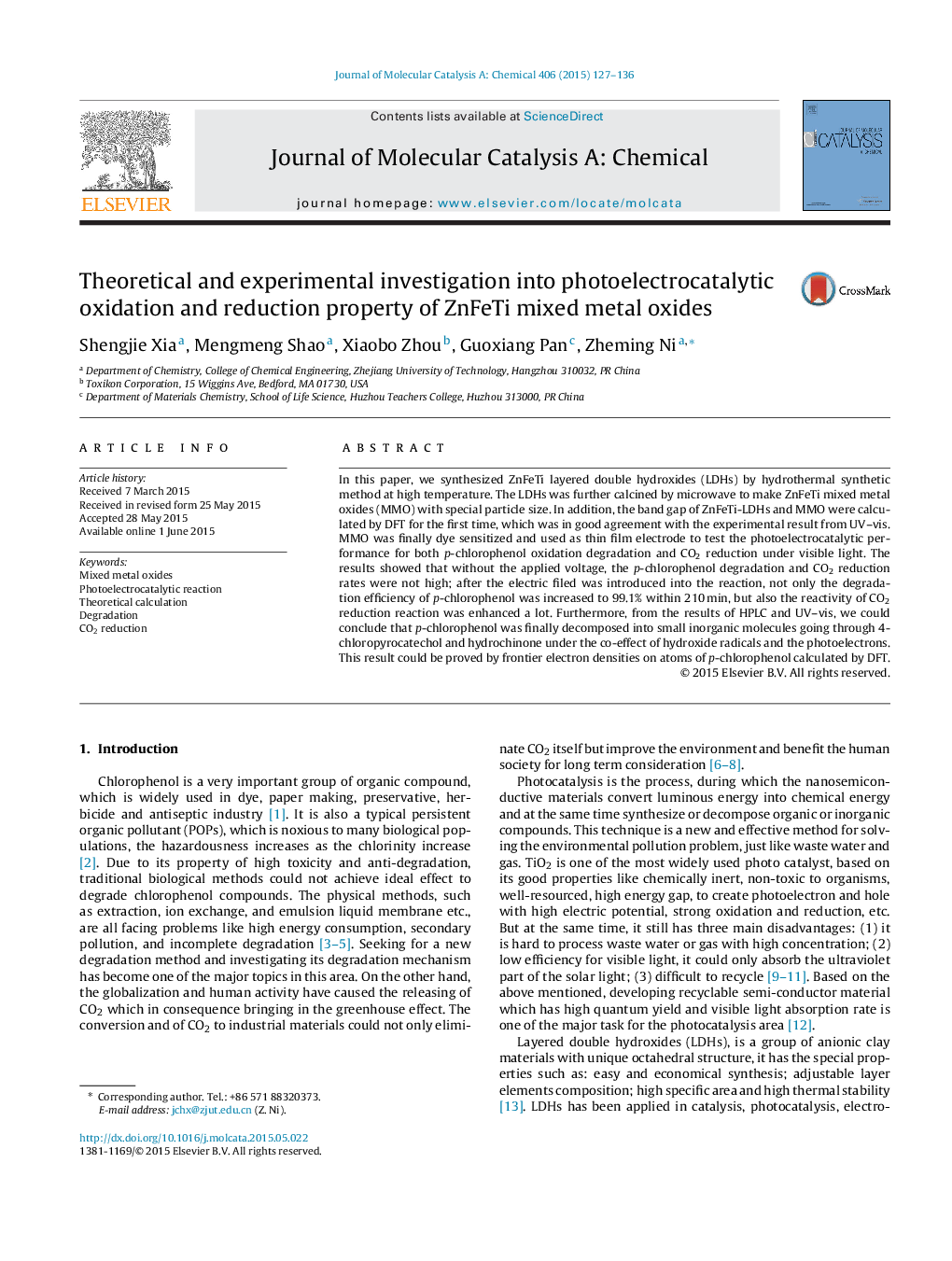| کد مقاله | کد نشریه | سال انتشار | مقاله انگلیسی | نسخه تمام متن |
|---|---|---|---|---|
| 64965 | 48376 | 2015 | 10 صفحه PDF | دانلود رایگان |

• ZnFeTi mixed metal oxides (MMO) film with narrow band gap and high surface area has been synthesized.
• The exact band gap for ZnFeTi layered double hydroxides and MMO was calculated by DFT for the first time.
• MMO film shows very high efficiency both for p-chlorophenol degradation and CO2 reduction.
• The extra applied electric field could improve the catalytical performance of MMO film.
• Mechanism for p-chlorophenol degradation and CO2 reduction were both discussed detailed.
In this paper, we synthesized ZnFeTi layered double hydroxides (LDHs) by hydrothermal synthetic method at high temperature. The LDHs was further calcined by microwave to make ZnFeTi mixed metal oxides (MMO) with special particle size. In addition, the band gap of ZnFeTi-LDHs and MMO were calculated by DFT for the first time, which was in good agreement with the experimental result from UV–vis. MMO was finally dye sensitized and used as thin film electrode to test the photoelectrocatalytic performance for both p-chlorophenol oxidation degradation and CO2 reduction under visible light. The results showed that without the applied voltage, the p-chlorophenol degradation and CO2 reduction rates were not high; after the electric filed was introduced into the reaction, not only the degradation efficiency of p-chlorophenol was increased to 99.1% within 210 min, but also the reactivity of CO2 reduction reaction was enhanced a lot. Furthermore, from the results of HPLC and UV–vis, we could conclude that p-chlorophenol was finally decomposed into small inorganic molecules going through 4-chloropyrocatechol and hydrochinone under the co-effect of hydroxide radicals and the photoelectrons. This result could be proved by frontier electron densities on atoms of p-chlorophenol calculated by DFT.
Figure optionsDownload high-quality image (153 K)Download as PowerPoint slide
Journal: Journal of Molecular Catalysis A: Chemical - Volume 406, September 2015, Pages 127–136